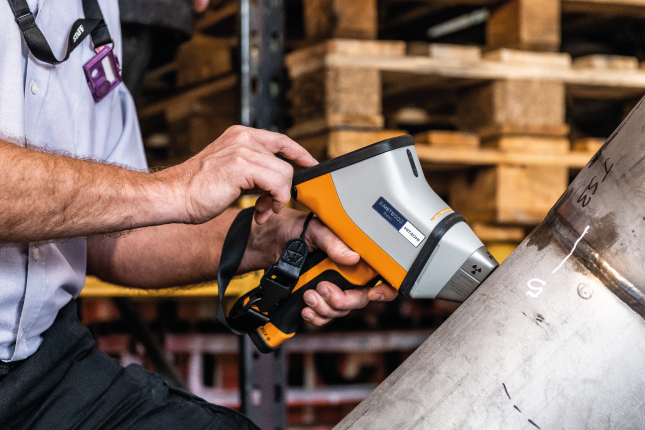Non-destructive testing (NDT) brings together innovations in physics, chemistry, and technology to test materials while leaving them totally undamaged. Before its emergence, the idea of being able to accurately analyze the chemical composition of something without cutting a bit of it off, or burning it, seemed fanciful.
Now, NDT is a crucial part of ensuring that the materials used to make the things we depend on every day are safe and reliable. From pipelines and oil refineries to bridges and motor vehicle components, the ability to accurately test components without detracting from their usefulness provides a huge range of benefits.
NDT is the name given to a wide group of analysis techniques that use electromagnetic radiation, sound or other kinds of signal conversions to evaluate a range of materials. The central characteristic that links these methodologies is that the material or component being tested can still be used afterwards.
This makes these techniques particularly well suited to testing system components in situ after they have been installed or during quality control where you cannot leave marks on what you are testing. NDT is widely used to test chemical composition as slight variations for example in the chemical composition of piping can have significant effects on a component’s ability to withstand corrosion, high heat and pressure. NDT can help to give an accurate picture of exactly what a component is made of and how this may change over time.
Hitachi High-Tech offers a number of NDT positive material identification (PMI) solutions, both benchtop and handheld, which use X-ray technology. With X-ray fluorescence (XRF) analyzers, the sample is first excited with an X-ray. When the sample returns to a normal state, the excess energy released forms a secondary X-ray which is collected with the detector and translated to the elemental composition.
When it comes to non-destructive testing, XRF has an edge over the two other primary PMI methodologies: optical emission spectroscopy (OES) and laser-induced breakdown spectroscopy (LIBS). While all are extremely accurate and effective testing methods, both OES and LIBS leave small, but visible, burn marks on the tested materials.

As a completely non-destructive method of testing that provides users with accurate materials analysis in seconds, XRF is the optimum testing solution for many industrial sectors.
PMI in QA/QC
Manufacturers, suppliers and purchasers of materials need to be able to quickly tell whether they are getting what they paid for. With XRF testing, product quality can be established at every stage of a supply chain without damaging the material.
PMI in aerospace and automotive
The aerospace and automotive industries rely on aluminium alloys as a manufacturing material. Being able to comprehensively analyze the composition of these materials in-situ is essential to ensuring safety.
PMI in petrochem, oil and gas, and power plants
Inspecting components before, during and after installation to ensure alloy chemistry and grade ID without making any structural changes to keep sites safe and compliant.
Coatings
Quick, non-destructive XRF analysis of heavy and bulky items when it’s not practical to use a benchtop instrument.
Precious metals
The clue’s in the name. These materials have extremely high value and are highly sought after for a range of industrial applications as well as the jewellery industry. Leaving the barest mark or imperfection on these materials can have a significant effect on their value.
Regulatory
XRF is essential in ensuring industrial sites are safe and compliant. Being able to test components in the context in which they are used means operators can develop an up-to-date and comprehensive overview of the health of their sites and quickly spot and deal with potential problem areas.
Archaeometry
When trying to accurately determine the chemical composition of archaeological artefacts and materials, the last thing you want to have to do is disturb the samples. XRF is widely used by universities across the world to analysis soil, ceramics, pigments, glass and metals found on archaeological sites.
Hitachi High-Tech offers cutting-edge XRF solutions in both handheld and benchtop options.
The handheld X-MET8000 can be carried easily, allowing operators to inspect system components in whatever environment they are being used. The results appear in seconds on the device’s screen, and can also be stored and shared easily with ExTOPE Connect.
The FT range and X-Strata920 microspot XRF coating thickness and materials analysers enable operators to achieve rapid quality control and validation testing across a range of applications from corrosion and wear resistant coatings to decorative finishes. They make it easy to get the right results in seconds.
To book a demo of one of Hitachi High-Tech’s NDT solutions, or to speak to a member of our team about NDT testing, get in touch today.
Find out more